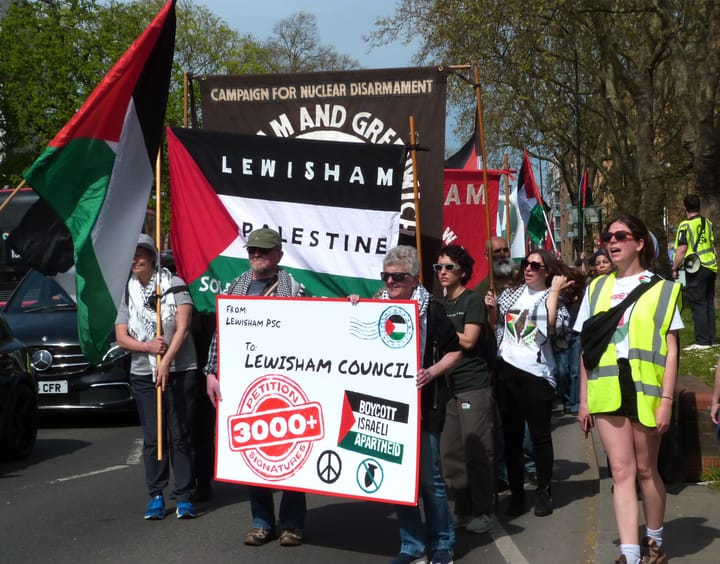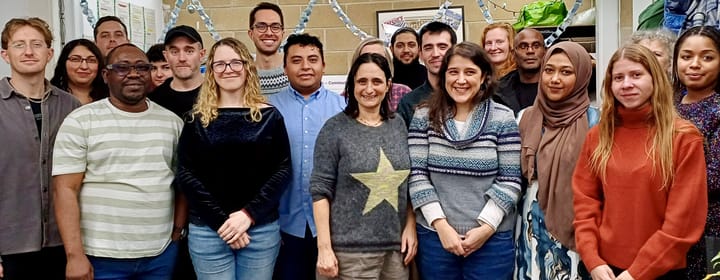Silvertown tunnel to open 7th April - locals brace for "HGVs ploughing through our roads"
The twin-bore tunnel runs under the Thames between north Greenwich and Newham, and will bring up to 30,000 additional vehicles a day to the area. It offers a new route for HGVs to cross southeast and east London.
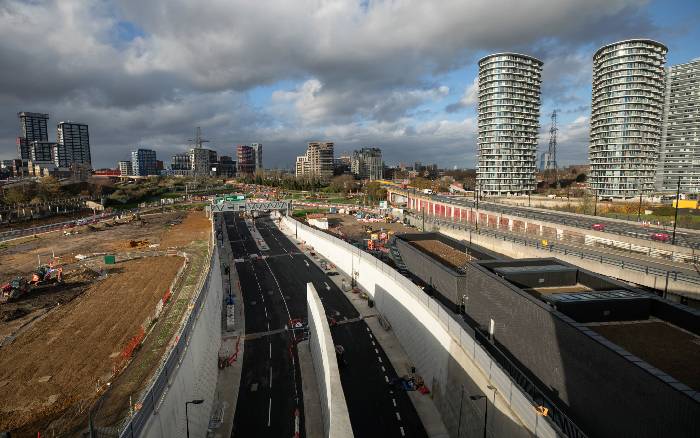
London's largest infrastructure project, the £2.2 bn Silvertown tunnel, is preparing to open. It will have driver tolls to suppress daytime traffic, while nearby Blackwall tunnel will also be tolled.
The tunnel has faced widespread opposition since it was proposed in 2012, on the grounds that it would bring heavy traffic into east and southeast London and increase noise, air pollution and greenhouse gas emissions.
The new traffic will travel through some of the most deprived areas in London that already suffer from high levels of air pollution.
"Overwhelmed with applications for logistics hubs"
The existing Blackwall tunnel does not allow larger HGVs, whereas the new Silvertown tunnel has a designated lane for HGVs and buses. Campaigners always feared that this would attract a new stream of heavy traffic into southeast and east London.
Greenwich Labour councillor David Gardner told Tfl that councils are seeing this this play out, as freight companies jostle to take advantage of their new opportunity.
Greenwich and Newham councils are "overwhelmed with applications for more logistics hubs," he told Greenwich council Transport Scrutiny meeting on 6th February.
Gardner argued that the daytime tolls for HGVs are too low to deter the operators, and pointed out that from 10pm to 6am it is free "for HGVs to plough their way through our roads".
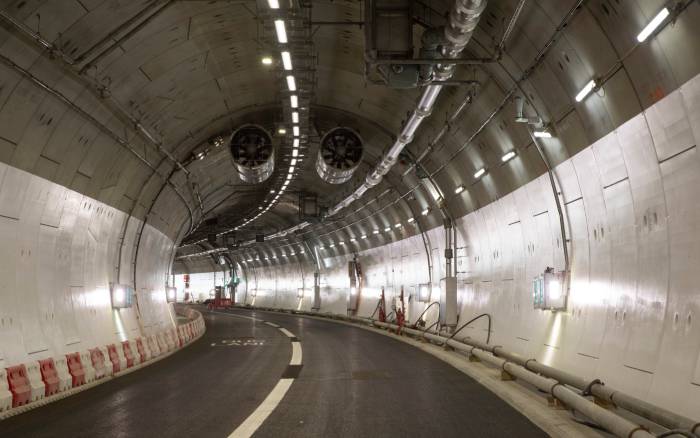
"User charge is the mitigation"
Tfl's position is that user charges for vehicles and HGVs (ie daytime tolls) will suppress traffic at the Silvertown tunnel, countering the "induced traffic" effect created by the new route, and bringing noise and air pollution down to pre-opening levels.
Tfl Transport planner Chris Lynch replied: "The user charge is the mitigation, the user charge is shown to work through the models that we have."
London net zero - target to reduce traffic by 27%
Councillor Gardner also challenged Tfl to explain how the new scheme supported the London mayor's target of reducing traffic by 27% across London, which forms part of his ambition for London net zero by 2030.
"Tunnels have to be part of that equation because they drive a lot of traffic into and out of London," Gardner said. "And yet that has been totally ignored".
He added that Greenwich council had committed to a 45% reduction in cars and a 10% reduction in HGVs by 2030.
The bike shuttle bus
Campaigners have criticised the tunnel operators for failing to provide sustainable travel options through the tunnel.
Tfl responded by announcing the "bike shuttle bus" for cyclists and cargo bikes which Tfl plan to run every 12 minutes. Pedestrians will be expected to wait for a regular bus.
Sadiq Khan's backing for the tunnel
It has surprised many that the London mayor has consistently backed the tunnel, even while his understanding of the harms of air pollution grew, and he made the introduction and extension of ULEZ, to reduce London's air pollution, a personal mission.
Khan's justification for the project has always been that the Blackwall tunnel is “not fit for purpose” while he insists that adding the Silvertown tunnel “will massively reduce congestion in the area, improve air quality and support economic growth in East London”.
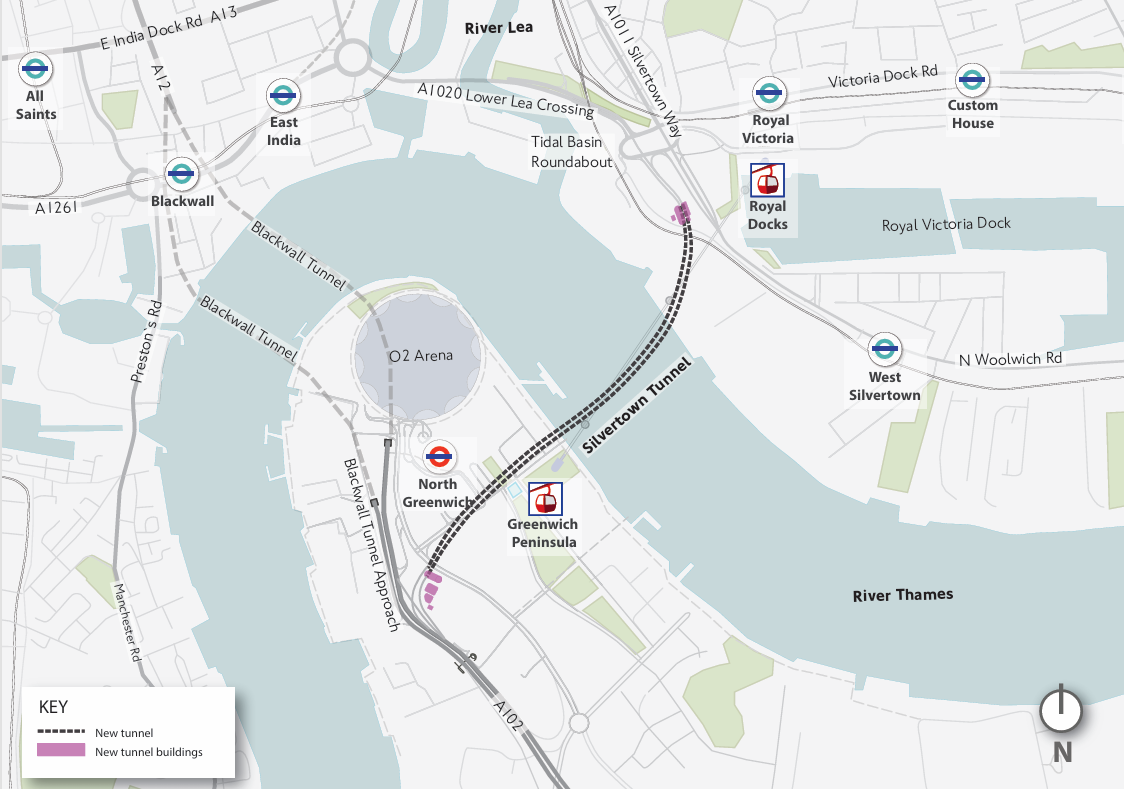
The tunnel route. Image: Transport for London
Development steamrollered through as "NSIP"
Khan inherited the project from his predecessor, Boris Johnson, when he became mayor in 2016. Two years later, transport secretary Chris Grayling approved it as a "nationally significant infrastructure project" (NSIP).
NSIP status allows developers and their investors to overrule the planning decisions of councils and other local opposition. Newham and Greenwich councils and neighbouring Hackney, Southwark and Lewisham oppose the tunnel.
Vision of repurposing the tunnel to put people first
As the first bore of the tunnel completed, Newham and Greenwich joined a wide range of campaigners, including health workers and climate scientists, arguing that the tunnel should be "repurposed", prioritising public transport, cycling, cargo bikes and pedestrian use.
But the plea was ignored. The two-bore tunnel that was delivered appears to lock east and southeast London into heavy traffic and increased noise, air pollution and carbon emissions for decades to come.
Salamander News will follow up as the tunnel opens, including the reactions of local communities.


